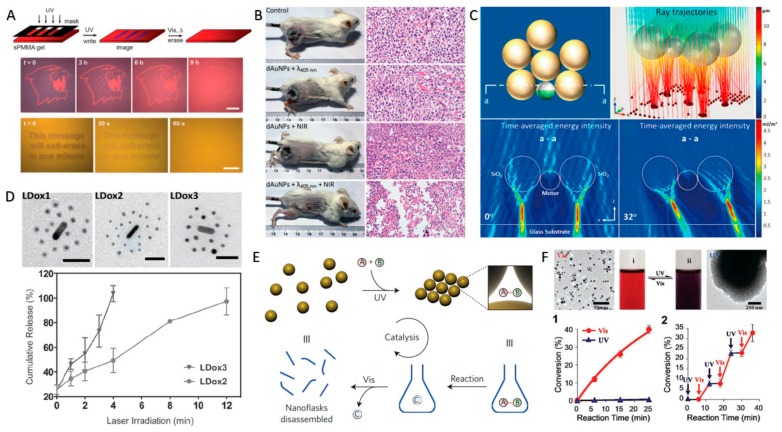Figure 8.
Applications of light-controlled CP swarms and assemblies. (A) The writing and erasing processes on an organogel “paper” containing photoresponsive Au or Ag nanoparticles inks under the control of UV light and visible light, with 0.8 s UV exposure through a transparency photomask; images obtained in Au and Ag nanoparticles films; the self-erasing of images in an Au nanoparticles film needs 9 h in daylight and 60 s in an Ag nanoparticles film by exposure to intense (0.3 m·W·cm-2) visible light (reproduced from [87]); (B) the in vivo photothermal treatment of malignant tumors by cross-linked Au nanoparticles aggregates (reproduced from [92]); (C) numerical simulation results illustrating that the colloidal molecule can act as a microlens array for light manipulation (reproduced from [40]); (D) the near-infrared (NIR) light-triggered drug release from core–satellite superstructures; scale bars are 30 nm (reproduced from [93]); (E) schematic demonstration of reactions in “dynamic nanoflasks” between assembled azobenzene-coated nanoparticles under UV irradiation, and the subsequent product release due to the disassembly of the cluster under visible light irradiation (reproduced from [94]); (F) the light-switchable catalytic activity of photoactive Au nanoparticles; Au nanoparticles decorated with photoactive ligands catalyze a hydrosilylation reaction when in dispersed state, while they have a lose catalytic activity when in aggregated state under UV irradiation (reproduced from [95]).

